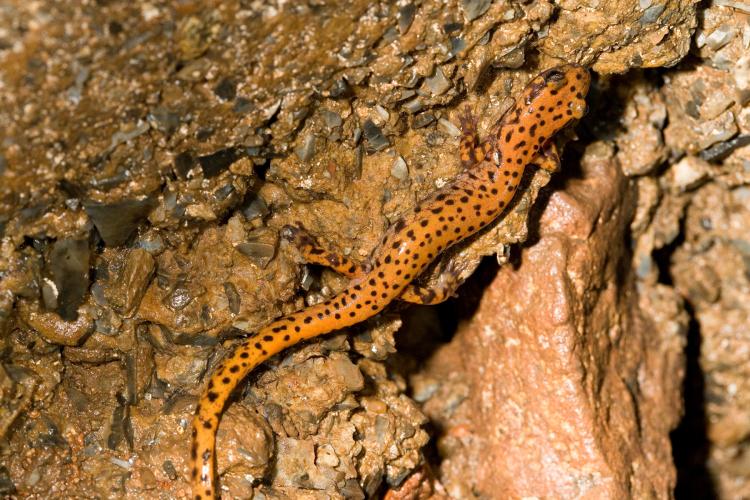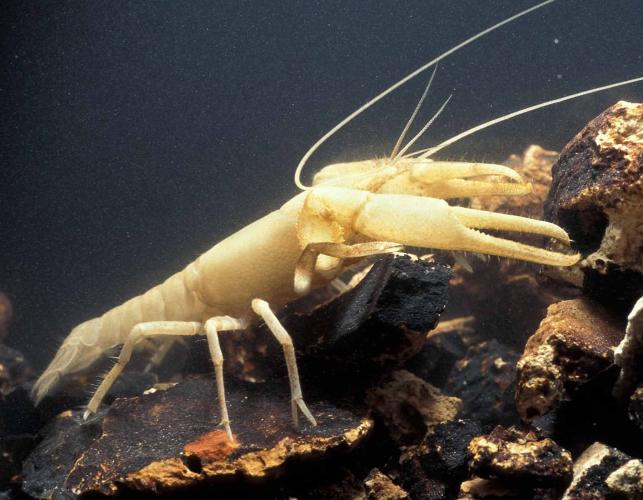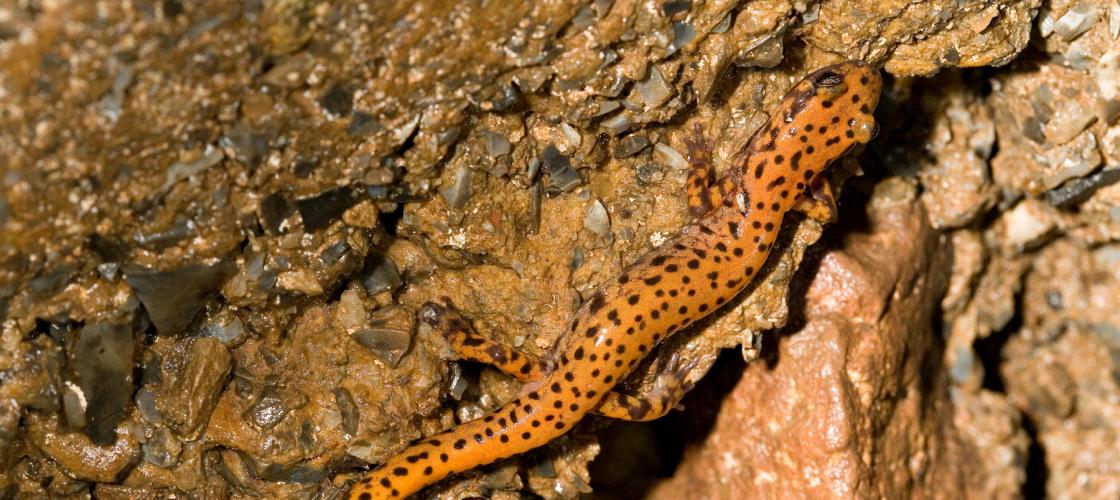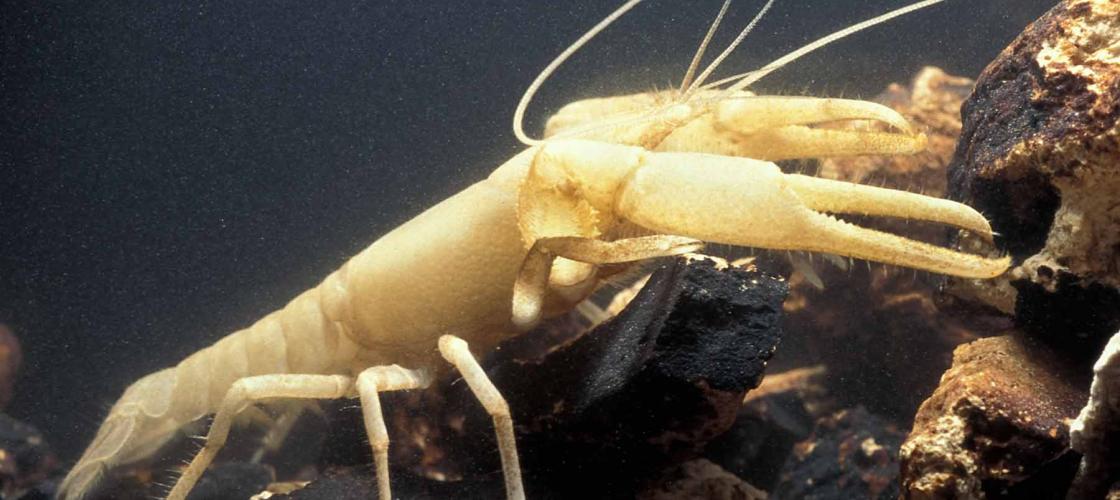When you think of caves, bats and our cave-dwelling ancestors come to mind. But caves also harbor many other kinds of animals.
Some bats need caves for raising their young. Other bats, as well as black bears and pickerel frogs, spend winters in caves, where the constant mild temperature helps them conserve energy.
Most animals that use caves are just visitors spending most of their lives on the surface. Raccoons wander deep into caves, and salamanders use them to avoid summer droughts.
Unlike cave visitors, some cave dwellers can exist nowhere else. Cave crayfish, grotto salamanders and shrimp-like creatures never leave the cave’s stable environment. Cave animals are often blind and white, having no need for sight or pigment in their dark world. However, they do have a remarkable ability to detect movements and odors–the senses they need to survive.
Cave animals depend on the above-ground world to fuel their dark home. With no green plants and sunlight, energy must be imported. Droppings left behind by cave visitors and leaves washed in from the surface form the base of the cave food chain.
Cliff Cave, located near St. Louis, was gated in October 2009 during the National Cave Gating Workshop to help protect endangered bats.
A Mini Guide to Cave Dwellers
- Ozark Salamander: This slender species has a narrow, somewhat lobed mid-dorsal stripe that is wider behind the hind legs with irregular or wavy edges. It is sometimes called the Ozark zigzag salamander.
- Northern Spring Peeper: This small slender frog has a dark-to-faint X-shaped mark on its back. It’s been reported to be found in seven caves in Missouri.
- Eastern Pipistrelle: The most commonly seen cave bat in Missouri, it has tricolored pelage (fur) and prefers to roost singly in the dark zones of caves.
- Hibernating Indiana Bats: These bats usually hibernate in clusters, but may roost singly. They form large dense clusters of 300-400 per square foot, sometimes thousands at a time. They are not found in caves during the summer.




Recent Posts
























